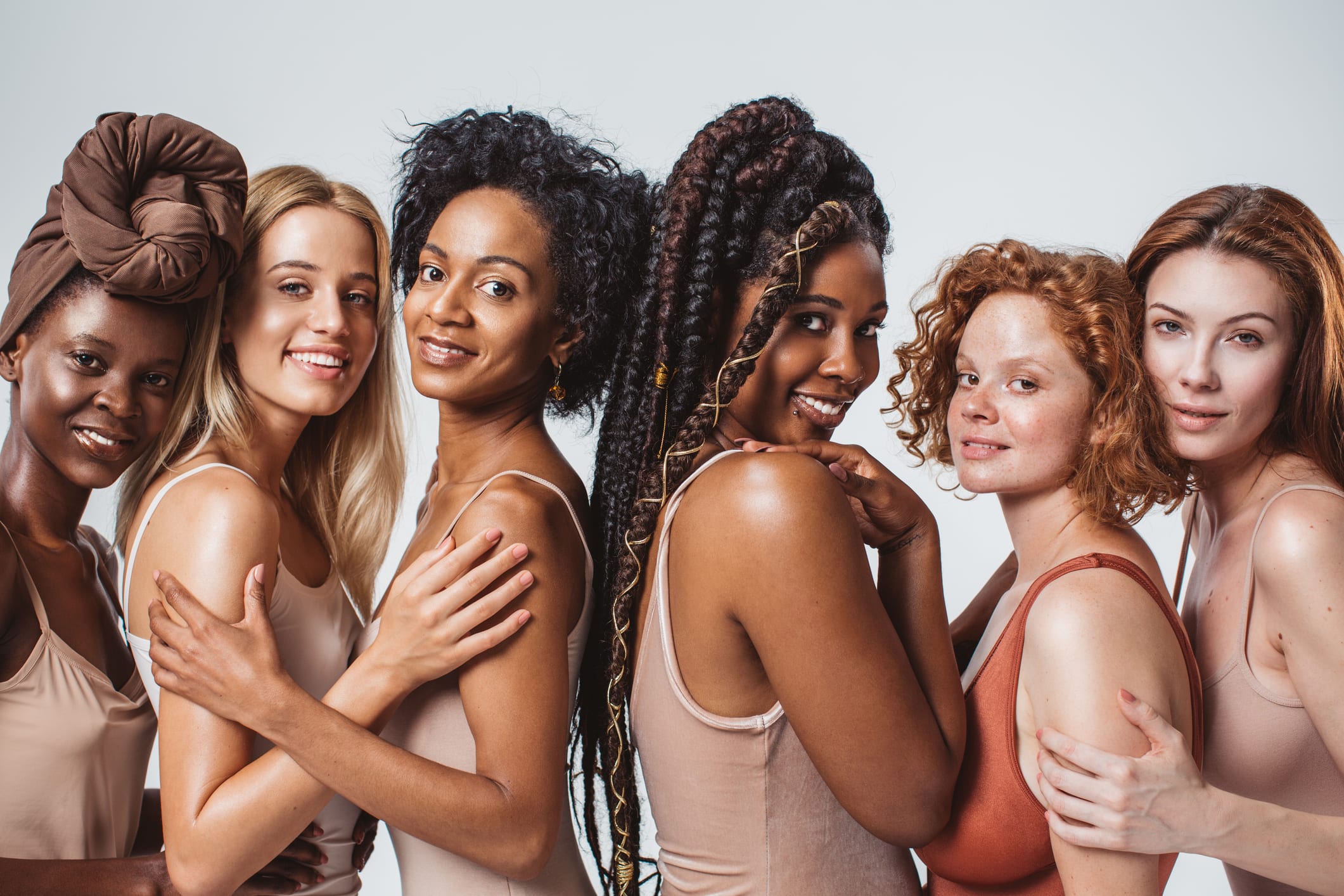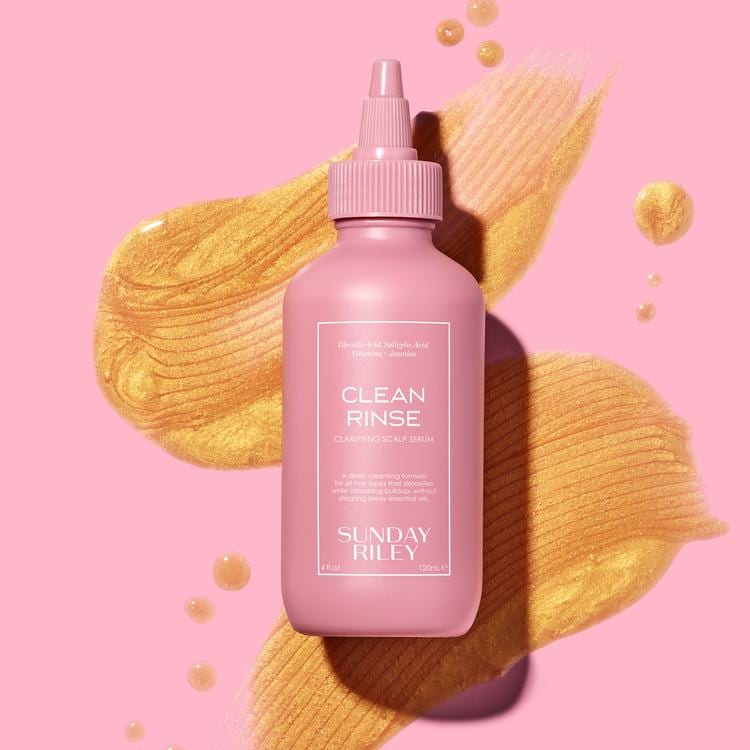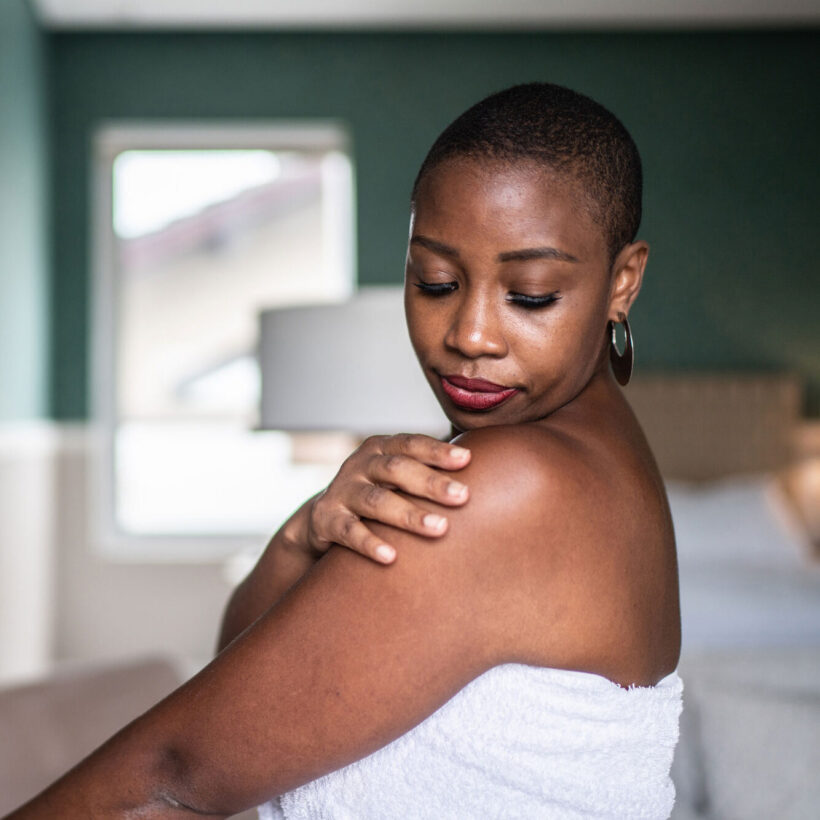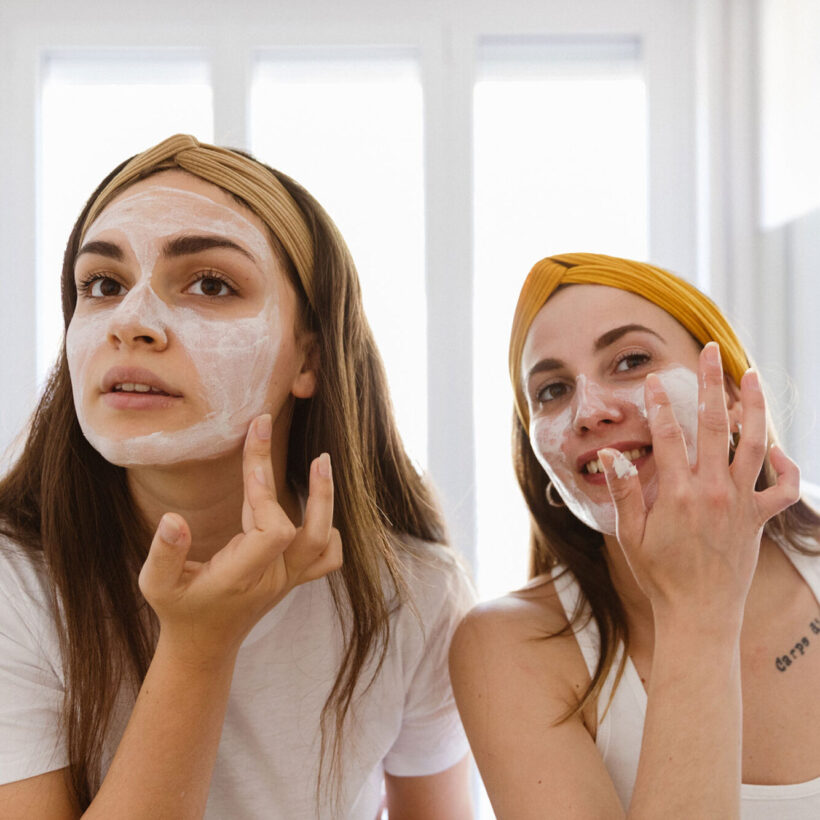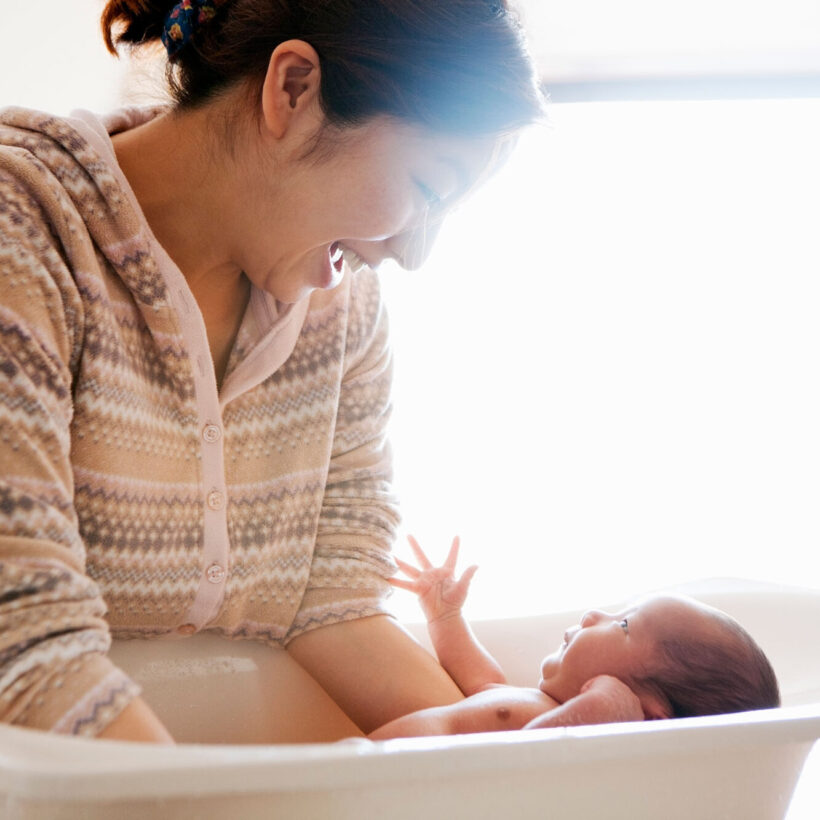Figuring out the right hair styling and hair care regimen for your unique needs can be a tricky process of trial and error. Just like your skincare routine, it’s essential to figure out your hair type so you make sure your products are tailored for you. It’s way more nuanced than deciding that your hair is “straight” or “curly.” If you follow stylist Andre Walker’s (Oprah’s hairstylist for over two decades) popular hair typing method, there are four main types — straight, wavy, curly and coily – with multiple subtypes that get down to specifics. There are many factors that are involved in figuring out your hair type, but luckily we did the homework for you:
How is hair type/curl pattern determined?
“To understand curl type and pattern we need to be in touch with our roots — pun intended. Hair grows out of small openings of our skin, called follicles. At the bottom of the follicle is a root made of cell proteins. This root is where hair starts to grow. Blood, located in blood vessels in the scalp, nourishes the root, creating more cells and hair growth,” says Diana Pratasiewicz, director of education at Ouai. This affects your curl pattern in three ways:
- Hair follicles: “The shape of the hair is determined by the shape of the follicle. The flatter or more oval-shaped the follicle, the curlier the hair; the more circular the cross-section, the straighter the hair,” says Pratasiewicz.
- Hair cell structure: If the proteins of your hair are produced in an asymmetrical pattern, it’ll cause hair to curl.
- Hair cycle: The hair growth cycle phase (otherwise known as the anagen phase) is about three to five years. “Genetics play a role in deciding what kind of hair you will have,” says Pratasiewicz. For instance, people of Asian backgrounds can have a hair cycle that lasts as long as seven years.
Additionally, other factors that play into your specific hair type include:
- Density: This refers to how many individual hairs you have. It’s impossible to count your exact number, so it’s categorized under thin, medium, and thick hair density. The rule of thumb: If you can see your scalp when you part your hair, you have thin hair density; if you can partially see your scalp, then you have medium hair density; and if you can barely see it, you have thick hair density.
- Diameter: This is the thickness of each individual hair and is categorized under thin, medium, and thick diameters. If you’re trying to determine where you fall, a thick diameter is just about the same thickness as a standard piece of sewing thread.
- Porosity: Like a sponge, your hair can absorb moisture. The more porous your hair, the less it can retain hydration. It’s categorized between low, normal, and high. You can test out your hair’s porosity yourself by dunking a freshly washed strand into a glass of water. Does it stay afloat? You’ve got low porosity.
- Elasticity: This basically determines how strong your hair is. If you have high elasticity, it’s an indication of good healthy hair. To give it a test, you need to take a wet, single strand of hair and try to stretch it as much as possible. If it breaks the moment you stretch it, you have low elasticity. If you’re able to get a good amount of stretch, you have healthy, high elasticity.
- Age: “Hair may alter over time. For example, you might have had curly hair as a baby, but as an adult, it became straighter,” says Pratasiewicz.
How do I know which hair type I am?
Shakira Clark, Living Proof educator breaks down the four main categories of hair types and subtypes. “Sub-classifications are based on the width and diameter of the wave, curl or coil pattern. Type A is a wider pattern size, type B is medium, and type C is smallest,” she says.
Type 1: Straight

People with type 1 hair have straight hair that lies flat. It’s difficult to hold a curl when you try to style it with hot tools, and this type of hair tends to look shinier because scalp oils can easily extend from root to tip.
- 1A hair is stick-straight (no wave or curl whatsoever), it’s typically fine, and it can’t hold a curl when heat-styled.
- 1B is straight hair that’s not so different from type 1A but perhaps has a little more body. It can hold a curl while heat-styling.
- 1C hair is straight with a few gentle waves and is thicker than 1A.
Type 2: Wavy

“This describes people with hair that has more of a wave or an S-shaped pattern. Type 2 hair typically don’t have many full-on ringlet curls, but the 2C’s might have a couple fully formed curls in places,” says Clark. People with this hair type may not be as typically oil as type 1 hair thanks to the natural texture, and wavy hair tends to be thicker than type 1.
- 2A is very loose to no curl. This would be considered a very loose wave.
- 2B is an S-shaped wave, which begins to form from the middle to the ends of your hair.
- 2C is an S-shaped wave that forms closer to the crown and travels to the ends of your hair.
Type 3: Curly

“People with this hair type have curls that are more fully formed, they’re wider in diameter and ringlet shaped. Their curls can range from the width of a curling iron barrel (3A) to the size of a pencil (3C).”
- 3A hair has wide spiral-shaped curls that evenly travel from the roots to the ends.
- 3B has tighter, spiral curls that are all over the entire head. These curls provide a lot of body and volume.
- 3C hair has very tight spiral curls that we call “corkscrew curls.” These curls you will find are densely grouped together.
Type 4: Coily

“This describes people who have either ringlets with a much smaller diameter (think pencil width or smaller) or tightly coiled hair.”
- 4A hair has small, tight coils that start from the root and maintain texture throughout the entire head.
- 4B hair has very tight coils that could form a Z-shape or zig-zag pattern.
- 4C hair are the tightest coils that have a defined zig-zag pattern and a very dense texture. These curls are most prone to shrinkage.
What are tips and tricks for…
… Type 1 hair?
“This hair type might have a hard time holding a shape or style other than straight. To help hair achieve volume, bend and movement for 1A or 1B hair, use Ouai Volume Spray during a blowout. This will help hair feel thick, full, and have a definition,” says Pratasiewicz.
If you’re using a hot tool to style your straight type 1 hair, “it’s important to use an Ouai Memory Mist Heat Protection Spray to protect the hair’s cuticle (the hair’s outer layer that is responsible for shine and when disrupted can cause frizz,” she says. “I also recommend people with this hair type to sleep on a silk Slip Pillowcase at night to keep your style lasting longer.”
If you have type 1C hair that has an ever-so-slight wave to it, “enhance its natural shape with a wave spray. Think about how your hair feels in the ocean water — thick and full of added texture,” she says. A wave spray recreates that vibe.
… Type 2 hair?
“People with this hair type are usually focused on enhancing their natural texture and bringing out more of it,” says Molly Leahy, Living Proof salon stylist. “Doing a wet styling technique on 2A, or any type 2 hair, will allow the hair to have better hold with longer-lasting results. Start off with texture-enhancing products like the Living Proof Curl Enhancer and Living Proof Curl Defining Gel on damp hair. Then style hair into braids or twists overnight. If you want to go for a softer, beachy wave to complement 2B hair, try using the Curl Enhancer on its own. For 2C hair, try using the Living Proof Curl Moisturizing Shine Oil as a pre-treatment for your hair five minutes before you wash your hair. This will allow you to get some of the great benefits like shine and softness without weighing down fine hair strands,” she says.
… Type 3 hair?
This hair type usually has a difficult time maintaining the curl shape, so products and techniques that help define curls without adding any crunch are key. “A technique I like to use for 3A hair is plopping. This can help curls have more lift and bounce. First, detangle freshly cleansed hair using a leave-in conditioner, then scrunch or twist hair with Ouai Curl Creme. Use a microfiber towel (I love the one by Kitsch) or a cotton T-shirt. Flip your head forward by bending at the waist. Center (a.k.a. plop) your hair in the middle of the towel. Wrap your hair with the towel to keep curls scrunched on top of your head until dry,” says Pratasiewicz.
“For 3B hair, Ouai Hair Oil will be your best friend for shine and frizz control,” she says. Just remember when it comes to oils, a little goes a long way. “For 3C hair, use a wide-tooth comb in the shower to help evenly distribute conditioner and detangle hair. When combing through each section, remove the excess conditioner from the comb and place it back into the hair. This helps get the most out of your conditioner so your hair has lasting hydration,” she says.
… Type 4 hair?
Coily hair types crave moisture as it’s hard for your natural scalp oils to travel down the ends of your hair. “They can be prone to tangles and breakage so starting the detangling process with a moisturizing shampoo and conditioner formula like Living Proof Curl Shampoo and Conditioner can not only cut time out of your routine, but it’s also much gentler on your hair than having multiple steps and products,” says Leahy. “For extra-defined coils for 4A hair, rub some of the curl gel between your hands and use your fingers to finger-coil some key sections, especially in frizzier/undefined areas. When styling 4B hair, work in small horizontal sections up your head making sure to thoroughly coat your strands root to tip with the Living Proof Curl Elongator, which defines and detangles even the tightest coils. Air-drying is also a great option over diffusing to get the least amount of shrinkage for a 4B hair type. Because 4C hair types tend to have naturally drier hair it helps to saturate it with the product since it is normally very quick to absorb moisture. Styling with techniques like the two-strand twist or Bantu knots can really help the hair become defined. Breaking curls apart with a lightweight hair oil adds more moisture, softness, and shine,” she adds.
Regardless of your hair type, your scalp “needs the same kind of attention and care to cleanse, balance, exfoliate and manage as the face,” says Ava Shamban, M.D., a cosmetic dermatologist in Beverly Hills. Like the face, not cleansing or exfoliating the scalp can lead to a host of problems: clogged pores, excess debris, dead skin cells and blockages, product and sebum build-up, as well as environmental sludge and pollutants. A scalp buildup can also contribute to thinning hair or hair loss, so the use of AHAs on your scalp will leave it deeply cleansed without completely drying it out or stripping your hair of moisture, causing an excess production of sebum.
What happens if I temporarily or permanently changed my hair type?
“There can be many factors that can change or alter your curl type. Chemical processes such as relaxers or smoothing treatments (e.g. keratin treatment) can temporarily smooth your texture until your untreated hair grows back. There can be hormonal changes, especially in women when they are pregnant that can change hair texture and there are some medications also strong enough (like someone going through chemotherapy) that can make your hair grow back a different texture. For someone not going through those situations or using chemical services, you can also alter your hair texture and damage your hair by using too much heat on it. On the bright side, you can help revive your hair by doing a couple of things: wearing your hair naturally (no heat styling) and, if you have curls, using curl-enhancing products to train your hair to regain its shape over time. It can be a painful process to try and get your curls back after you’ve lost them, but with some time, consistency and the right products you can definitely help revitalize your curls,” says Leahy.
We only recommend products we have independently researched, tested, and loved. If you purchase a product found through our links, Sunday Edit may earn an affiliate commission.
